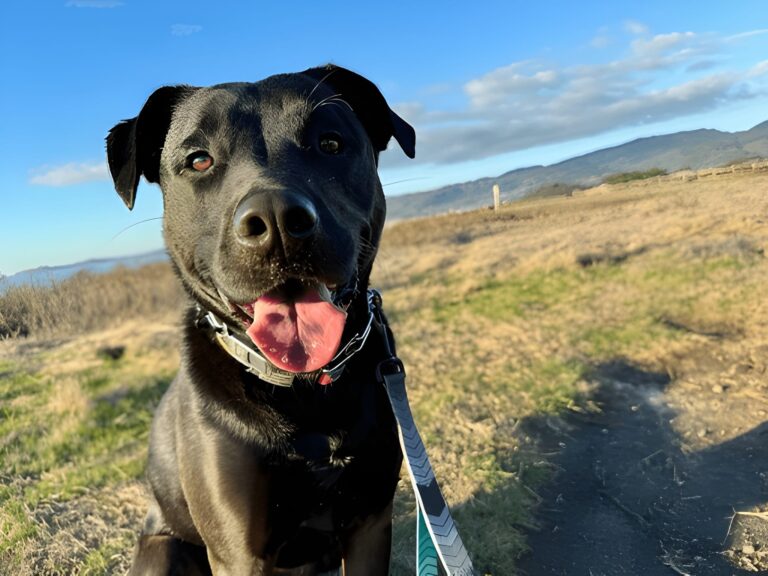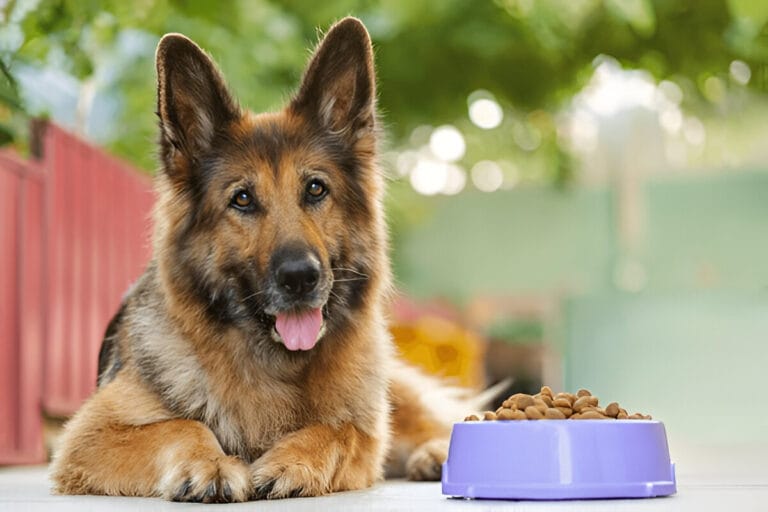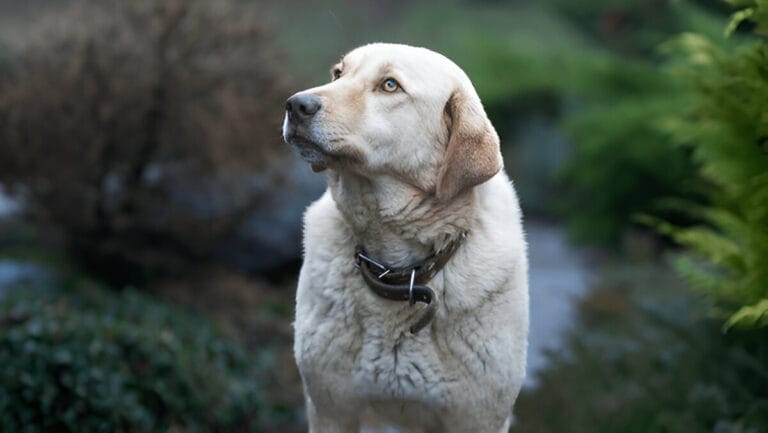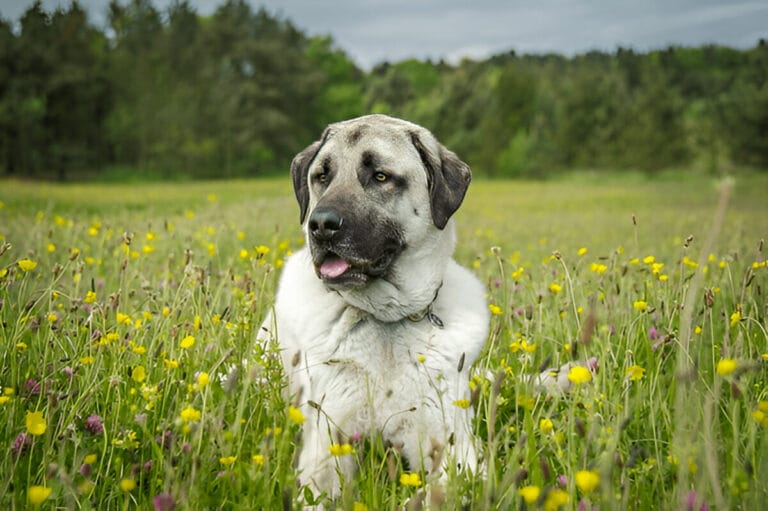Meet the Fluffy Labrador Retriever: Beyond the Traditional Look
When you think of a Labrador Retriever, you typically picture a good-natured dog with a golden coat that’s smooth and dense.
However, every once in a while, a Lab tends to surprise us with something different – instead of the expected short, thick, straight fur, long, silky hair shows up, creating what’s known as a longer coated Lab. This doesn’t mean the dog is any less purebred, though many owners and breeders might be caught off guard by this unexpected variation.
The Short coat remains the normal breed standard according to the American Kennel Club, where coats that are wavy, woolly, or sparse are considered atypical and would be severely penalized in competition.
Sounds kind of harsh, doesn’t it? But here’s the thing – if you only plan on showing your long-haired Lab in formal show competitions, though, you might face challenges. However, if you just want a playful, affectionate family pet, there’s no reason to balk at the extra length of your dog’s fur.
A fluffy Labrador makes just as good a companion as any short-haired version. Everyone knows Labs have been remarkably popular for decades, to the point where they’ve almost become synonymous with the traditional American household, and a Fluffy Labrador coat doesn’t change their wonderful temperament one bit.
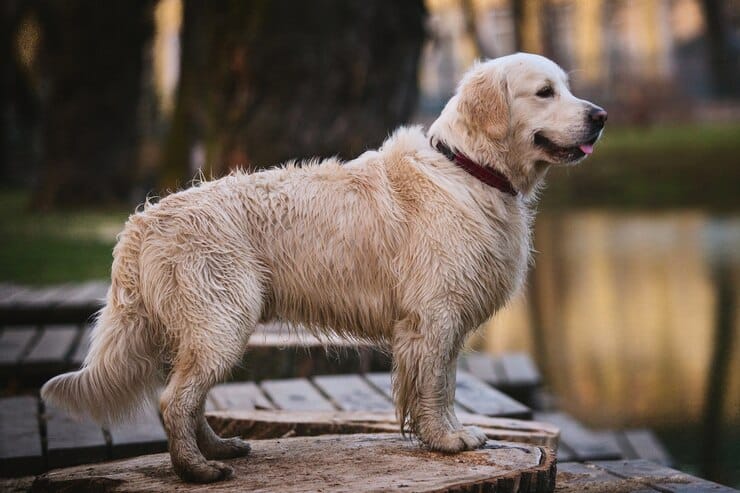
Photo credit: Freepik by alex_petz
Breed Overview
Families looking for a loyal dog that’s eager to please and wonderfully energetic will find Labs measure 21 to 25 inches tall and weigh between 55 to 80 pounds, with a lifespan of 10 to 12 years. These magnificent dogs come in Black, yellow, and chocolate colors, and they’re naturally calm, affectionate, and intelligent companions.
Although Long-Haired Labrador Retrievers aren’t much different from their short-haired companions, there are some critical differences in grooming that should be noted. Beyond that though, these dogs share similarities in nearly every other category – from their fascinating history to their widespread popularity and interesting quirks.
If you’re trying to decide whether a long-haired Lab is right for your family, or you’re simply curious about this furry friend variation, keep reading to learn something new about these remarkable pets. The fluffy Labrador coat doesn’t change their core Labrador traits – they remain the same devoted, family-oriented dogs that have captured hearts worldwide, just with a bit more fluffy Labrador to love and maintain.
Fluffy Labrador Retriever Characteristics
Energy
High-energy dogs like Labs need both mental and physical stimulation to stay happy and healthy, unlike low-energy breeds that require minimal activity. It’s important when choosing a dog to make sure their energy levels match your lifestyle and vice versa. These fluffy Labrador Labs need a lot of exercise and engagement while maintaining their characteristic friendly temperament.
Health
Larger breeds like Labs, due to their size, have potential genetic health issues and shorter lifespans than others, but proper exercise, nutrition, and hygiene play an important role in extending your pet’s lifespan. These fluffy Labrador Labs also require the same care standards as traditional coated Labradors to maintain optimal health.
Sociability
The fluffy Labrador dog is among the most social breeds, showing warmth towards humans and other dogs with no tendency to run from strangers or pets who want scratches and attention.
They’re less shy and won’t run away or become cautious or potentially aggressive, no matter what breed of other dogs they encounter. It’s important to socialize your fluffy Labrador and expose them to lots of different situations while they are young, as more exposure helps both the dog and other animals have positive interactions, setting them up for even better social skills throughout their lives.
Trainability
Easy-to-train dogs like fluffy Labrador’s are skilled at learning new prompts and actions quickly with minimal training, unlike breeds that are harder to train and require a bit more patience and practice. These intelligent dogs will respond well to consistent training methods and positive reinforcement.
Lifespan
Some dog breeds are prone to certain genetic health problems more than others, but this doesn’t mean that every fluffy Labrador will have these issues – they just face an increased risk. So it’s important to understand and prepare for any additional health needs they may require.
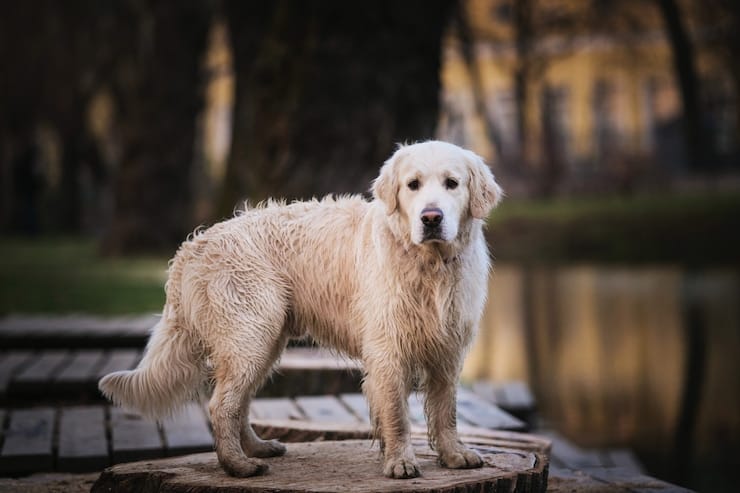
Photo credit: Freepik by alex_petz
The Earliest Records of the Fluffy Labrador in History
The fluffy Labrador Retriever did not originate from the Labrador Territory, even though that is where their namesake comes from – instead, this breed was discovered on a small island south of Newfoundland.
The most notable ancestor of the modern Labrador was born from various dogs that fishermen from European countries were roaming the area with, and these dogs were bred together, which eventually led to the creation of the St. John’s Dog.
This dog is known as the predecessor to today’s modern retrievers, although many believe it no longer exists in its original form due to deliberate breeding programs that were often carried out for specific traits.
The excellence in swimming and hunting that these dogs displayed paved the way for Labradors to deliberately bring out these skills that hunters desired, leading to the development of various coat types including the fluffy variations we see today.
Even though there were many breeding experiments over time, the core characteristics that made these dogs exceptional companions remained consistent, ensuring that both short-haired and long-haired Labs share the same remarkable heritage and working abilities.
How Fluffy Labrador Retrievers Gained Popularity
Fluffy Labrador were originally designed to help humans with hunting and fishing, but in the modern day, those tasks aren’t as common, so Labs are often kept as friendly family pets rather than working partners.
The switch from working dog to companion might have something to do with their excellent temperament – the Retriever’s gentle nature made them an incredible working partner but an even better family companion. Being so adept at companionship, it is only natural that the breed would expand beyond just hunters and anglers, including fluffy variations that maintain the same wonderful traits.
The fluffy Labrador reached the American Kennel Club’s number-one spot in 1991 and has remained near the top ever since, proving why they remain such beloved pets regardless of coat length. It is an incredible testament to their adaptability that both traditional and fluffy Labs continue to thrive as the perfect balance of intelligence, loyalty, and gentle nature for families everywhere.
Formal Recognition of the Fluffy Labrador Retriever
In 1917, the American Kennel Club recognized the Labrador as a breed, which closely followed the acknowledgment in England where the Retriever was established in 1903, however, there is a bit of controversy over Long-Haired varieties.
Although the Club recognizes them as the same breed, they are given a penalty for having a longer coat length, which is considered a significant difference from conventional standards, even though their genetics are otherwise the same.
The organization considers the long-haired version nonconforming to proper standards and to be penalized in shows, but there is no real difference between the two variations beyond coat type – they are still not separate breeds.

Photo credit: Freepik by EyeEm
Top 5 Unique Facts About Long-Haired Labrador Retrievers
Now that we have learned about this breed’s history and background, let’s take a moment to discuss a few interesting facts about these remarkable long-haired companions.
1. They Love Water
Labrador Retrievers were bred for swimming, so it is only natural that they would love water – due to their thick tails, webbed feet, and insulating coats, these canines can stay in the water for a long time before getting cold or tired.
Even fluffy Labs maintain these same aquatic adaptations, making them just as capable water companions as their short-haired counterparts, with their longer coat providing additional insulation during swimming activities.
2. They Come in Three Main Colors
If you know anything about Labradors, you probably have heard that the three main colors they can be are yellow, chocolate, and black, but some suggest different coat colors indicate their own unique personalities.
However, no evidence supports this claim – Labrador Retrievers are not personality-dependent on the color of their fur, and fluffy Labs display the same wonderful temperaments regardless of whether they sport yellow, chocolate, or black coats with longer hair.
3. They Are Versatile
Labradors have a diverse skill set and can excel in several competitions such as dock diving, hunting trials, agility tests, rally events, and obedience displays – this is largely due to their intelligence, discipline, and desire to cooperate.
Fluffy Labs maintain this same versatility, proving that longer coats don’t hinder their ability to perform in various canine sports and activities with the same enthusiasm and skill as traditional-coated Labs.
4. They Are Energetic
Labrador Retrievers are an energetic breed that can be lively and always eager for activity, although they are also calm and cuddly – if they do not have an adequate outlet for their energy, it can cause mischief as they start trying to release that pent-up energy in unwanted ways.
Training and socialization is essential for Labradors to ensure they put their enthusiasm in the right places, and fluffy Labrador require the same level of physical and mental stimulation to remain well-behaved companions.
5. They Are Social
Fluffy Labrador Retrievers are incredibly affectionate dogs who love humans and take care of them, and they enjoy meeting strangers who play with everyone – even around other dogs, they are eager to be social and friendly. Fluffy Labs maintain the same welcoming personality, making them wonderful family pets who thrive with human interaction and love to be the center of attention with their soft, longer coats inviting extra cuddles.
Does the Long-Haired Fluffy Labrador Retriever Make a Good Pet?
All Labrador Retrievers, including the long-haired variety, make excellent family pets – they are loving, energetic, and social dogs that enjoy being with people and other pets, and they are particularly wonderful with children.
Unlike conventional Labs, grooming is relatively easy but requires more attention – Brush them daily and bathe occasionally, as they shed a lot because of their dense double coat all year round, So you need to be brushed often. Just like their short-haired counterparts, you should ensure that their teeth are cleaned and nails clipped frequently for optimal health.
Conclusion
Long-Haired fluffy Labrador Retrievers may look slightly different than those with shorter hair, but it doesn’t change their personalities – their hearts are just as full of love for you and the rest of the world as short hair Labs. They are the same adorable, affectionate pups with a little extra fluff to make them even more huggable, proving that coat length has no impact on the wonderful Labrador temperament that families have cherished for generations.
FAQ’S
1.What is a fluffy Labrador called?
The name for a Fluffy Labrador is simply long-haired Lab, and it’s the result of a genetic anomaly that goes against ENCI breed standard that requires a short coat. Although it’s quite common to have also been mistaken for a Golden Retriever, especially as a puppy, its true identity remains that of a purebred Labrador.
2.Can Labrador Retrievers be fluffy?
Labradors are generally speaking a short-haired breed, but on the rare occasion you may come across a long-haired Labrador which is that recessive gene expressing itself. Labrador’s coats are normally dense and double-layered, giving them a lovely smooth and sleek appearance, but fluffy variations do exist naturally.
3.What is the fluffy Labrador gene?
The L-Locus represents a section of your dog’s genetic code that determines if they’ll develop a lengthy coat similar to a Golden Retriever or a shorter coat like a Labrador. Long hair in some breeds is also known as fluffy Labrador and is caused by a mutation in the FGF5 gene, this genetic variation explains why certain Labs develop longer coats.
4.Which type of fluffy Labrador is best?
The American Labrador stands taller with a leaner body, featuring a narrow head and longer muzzle that’s commonly referred to as the “working type.” These dogs are selectively bred for field trial competitions and boast incredible athleticism with an intense drive that matches their high energy level.
5.Is a fluffy Labrador a guard dog?
Labrador Retrievers aren’t guard dogs in the traditional sense because they’re more inclined to greet strangers with a wagging tail than show aggression. These intelligent and loyal companions possess a naturally friendly nature and gentle temperament that makes them typically considered poor choices for protection work.











